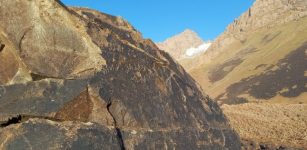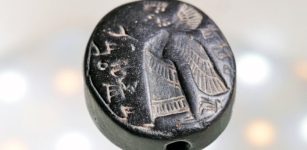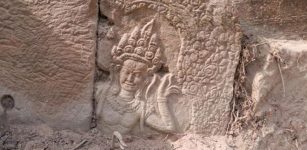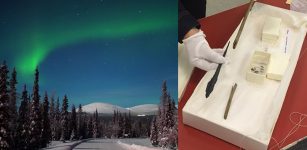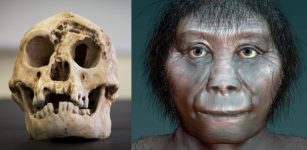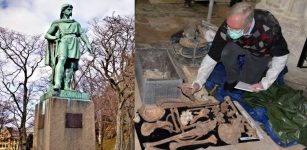Controversial Study Of Ancient DNA Could Re-Write History Of South Florida And Prove Humans And Huge Prehistoric Animals Co-Existed
MessageToEagle.com – By analyzing ancient DNA found at an archaeological dig in Vero Beach, Florida scientists are now trying to fill a fill a major gap in human history. The studied bones, discovered at the the Old Vero Man site could prove that humans were present in North America much earlier than previously thought. Such intriguing and controversial result could re-write the history of South Florida once and for all.
“It would imply that humans were on this continent much longer than originally thought,” said Greg O’Corry-Crowe, an FAU associate research professor.
The Old Vero Man site was originally discovered in 1915 when a farming company dredging a relief canal spotted part of a human skull and 44 other bones from up to five individuals, male and female.
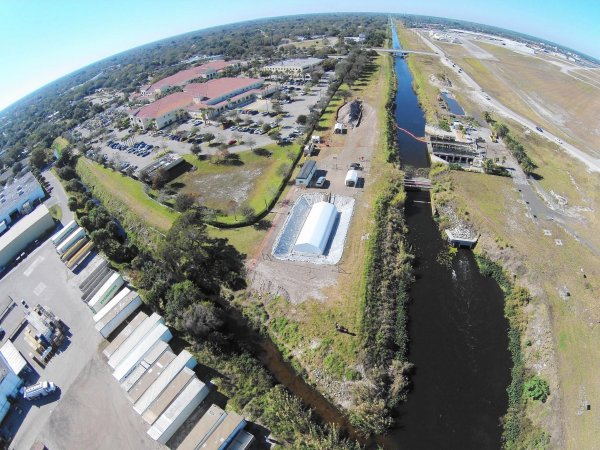
After inspecting the bones, Dr. E.H. Sellards, the state geologist in the early 1900s, developed a controversial theory: the bones were up to 14,000 years old so therefore humans co-existed with large prehistoric animals.
Most experts at the time believed humans arrived in North America 4,000 to 6,000 years ago, long after those animals went extinct.
Now a group of scientists from the Mercyhurst University Archaeological Institute are determined to prove Sellards was correct.
At present scientists are analyzing animal fossils and still trying to locate all the human bones found at the Vero site
FAU initially will analyze animal fossils because Mercyhurst is still trying to locate all the human bones found at the Vero site. He said many were dispersed over the decades to various museums, such as the Florida Museum of Natural History in Gainesville.
According to James Adovasio, provost of the Mercyhurst Institute and a world-renowned archaeologist the overall idea is to establish how long it took humans to migrate to Florida and how they adapted once they arrived. It is part of the quest to piece together the big picture of human history.
Modern humans first appeared about 195,000 years ago in East Africa. Likely chasing prey, they moved across Asia and what was then a land bridge to Alaska, arriving in North America about 20,000 to 25,000 years ago. They then took 5,000 to 6,000 years to cross the continent to Florida.
“The old model basically had these folks sprinting across North America, chasing and killing big animals,” Adovasio said. “We know now they moved very gradually.”
See also:
Our DNA Less ‘Human’ Than Scientists Previously Thought
Scots – Descendants Of Lost Race From Sahara – DNA Reveals
Ancient DNA Solves The Mystery Of Giant Bears In The Americas
They finally reached Vero Beach about 13,000 to 14,000 years ago, as the Pleistocene Epoch and the last Ice Age were drawing to an end. At the time, Florida was almost double its current size, extending out into the Gulf of Mexico and the Atlantic, and much of the state was more than 300 feet above sea level, said Andy Hemmings, lead archaeologist for the Mercyhurst Institute.
“The landscape was so different than what it is today,” he said.
Florida also was home to tapirs, sloths, camels, bison and horses – in addition to mastodons and mammoths. Many converged at what was then an “oasis” of streams and rivers about 35 miles inland from the ocean. Today, that is the Old Vero Man site and it’s about five miles inland, Hemmings said.
“It was a fairly constant source of fresh water and a tremendous draw to animals and human beings,” he said.
Growing in numbers and becoming more skilled hunters, the humans continued forging south, evidenced by the Cutler Fossil Site on the Charles Deering Estate in south Miami-Dade County. That site, dating back almost 12,000 years, was excavated in the mid-1980s by archaeologist Bob Carr, of Davie.
He said his team found bones from Paleo-Indians and “103 species of animals, including mammoths, a saber-tooth cat, a paleo-lama, and a California condor.”
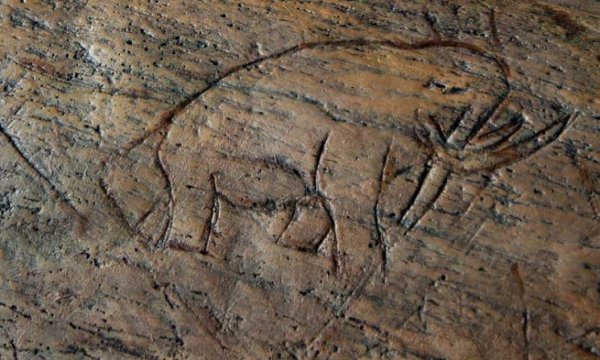
The Cutler site was the only one in this region that dated back to the end of the Ice Age; usually sites that old are buried far below the surface or paved over by development, Carr said.
By the time humans arrived in what is now South Florida, the Ice Age was almost over. Mastodons and their ilk were going extinct, likely because of climate change, Adovasio said.
Hoping to firm up this chronology, archaeologists excavated the Old Vero Man site earlier this year, and another dig is planned for January.
Potentially, they could unearth some of the oldest human remains in the United States, and “there is every possibility they could be among the most informative,” Hemmings said.
However, extracting ancient DNA will be a major problem because it has been degraded by time, said O’Corry-Crowe, who works at FAU’s Harbor Branch Oceanographic Institute in Fort Pierce.
Still, even a small amount would tell whether the bones were male or female and just how far removed those modern humans were from their ancestors, he said.
“With ancient DNA, you’re time traveling,” he said. “It provides us with a unique opportunity to look into Florida’s past.”
MessageToEagle.com

